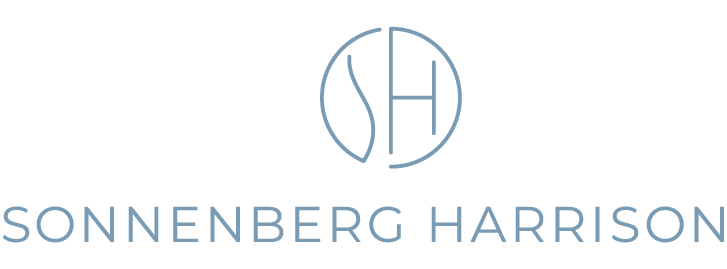An incentive program for invention disclosures in a company for employees is a program that rewards employees for disclosing their inventions to the company. The goal of such a program is to encourage employees to communicate their ideas and inventions to the company. This can help the company identify new opportunities for innovation and growth. Such incentive programs are common in larger companies.
A typical incentive program for invention disclosures has the following components:
Employee Invention Disclosure Form: Employees are provided with a form to submit their invention disclosures. The form should include information about the invention, such as a description of the invention, how it works, what problem the invention solves and details of any prior publications, patents or work known to the employees.
Review and Evaluation: The invention disclosures are reviewed and evaluated by a committee composed of members of the management team, R&D and legal team. The committee will determine if the invention is novel and inventive and if it has potential for commercialization as well as fitting into the company’s strategic goals.
Recognition and Reward: Employees whose invention disclosures are accepted will be recognized and rewarded for their contributions. The rewards can be in form of cash, stock options, paid time off, or other forms of recognition. A recent decision in Germany noted, for example, that larger companies typically paid EUR 500 on the filing of a patent application based on an invention disclosure.
Patent Application: The company pays the costs of preparing (often with the help of external patent attorneys) and filing a patent application for the selected inventions.
Royalties: If the invention is commercialized, the employee can receive further inventor compensation. In some countries, this is set by law, whereas in other countries it is a program set up by the employer itself. In Germany, for example, the law states that an employee inventor should receive compensation which is generally based on a (small) percentage of the royalties generated from the invention.
Communication: The company will communicate to the employee the status of their invention throughout the process and also keep them informed of any commercialization opportunities.
Recognition: Many firms include a “patent wall” highlighting their patented innovations to members of the public as well as other employees. They may give the inventor a certificate of recognition or invite them to an event.
It’s important to note that this is a sample program and can be adjusted to fit the specific needs and resources of the company. This program can be a good way to incentivize and encourage employees to share their ideas and inventions with the company, which can help the company identify new opportunities for innovation and growth.
The incentive program needs to also take into account risks, such as:
Legal Risks: The incentive program needs to be compliant with laws and regulations related to intellectual property, such as patent laws, and that employees understand their rights and responsibilities when it comes to disclosing their inventions. Legal advice should be taken to ensure that the program complies with local employment laws.
Confidentiality Risks: The incentive program may encourage employees to disclose confidential information about the company or its products and services. The company should have clear policies and procedures in place to protect the confidentiality of any information disclosed by employees. Some inventions are protected by trade secret laws if they are not filed as patent applications, which become publicly available after 18 months.
Misaligned incentives: The incentive program may not align with the company’s overall goals and objectives, and may lead to employees disclosing inventions that are not in the company’s best interest. It’s important to consider the company’s overall strategic commercial goals and objectives when designing the incentive program. Some ideas could be technically excellent and highly innovative, but the resulting patent application may bring no value to the company.
Employee morale and trust: Employees may feel that the incentive program is not fair and may discourage them from sharing their ideas. The goals of the program should be clearly communicated and ensure that all employees understand how it works, and how they will be recognized and rewarded for their contributions.
Financial risks: The program may be costly and may not generate enough revenue to justify the costs. A clear budget should be defined and the costs and benefits of the program set out to ensure that it is financially viable.
Administrative Risks: The program will add some administrative burden on the company, and may require resources to implement and maintain. These administrative costs and resources need to be taken into account to implement the program and ensure that the program is manageable.
It’s important to consider these challenges when designing and implementing an incentive program for invention disclosures in a company for employees, and to put in place measures to mitigate them.
Innovation is the driving force behind business growth and success. At SONNENBERG HARRISON, we understand the importance of fostering a culture of innovation within companies. That’s why we’re excited to offer our expertise in creating an incentive program for invention disclosures.
Our incentive program is designed to encourage and reward employees for sharing their ideas and inventions with the company. We work closely with your management team to create a program that aligns with your company’s overall goals and objectives.
Our program includes:
Employee Invention Disclosure Form: We can provide a form for employees to submit their own invention disclosures. This form will include information about the invention, such as a description of the invention, how it works, what problem the invention solves, as well as asking for information about prior work known to the inventors.
Review and Evaluation: We can help review and evaluate all invention disclosures with a committee composed of members of the management team, R&D and legal team.
Patentability searching: We can carry out short, pre-filing searches to identify relevant prior art to enable a good patent application to be written.
Recognition and Reward: We can provide examples of best practices used by other companies to acknowledge the achievements of their inventors.
Royalties: We can help calculate
Communication: We can remove some of the administrative burden by communicating to the employee the status of their invention throughout the process and also keep them informed of any commercialization opportunities.
Our team of professionals will ensure that the program is compliant with all relevant laws and regulations related to intellectual property, such as patent and employment laws. We’ll also work with you to put in place measures to protect the confidentiality of any information disclosed by employees.
We believe that our incentive program will help your company identify new opportunities for innovation and growth, while also rewarding and recognizing the contributions of your employees.
We’d love to discuss how our program can benefit your company and help you achieve your business goals. Contact us to schedule a consultation.




